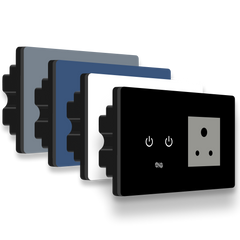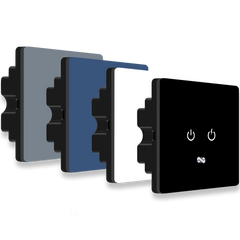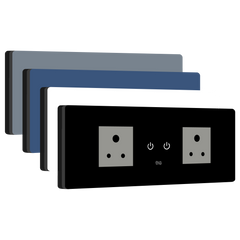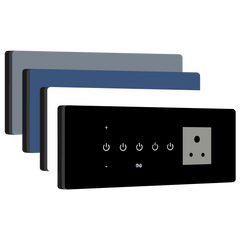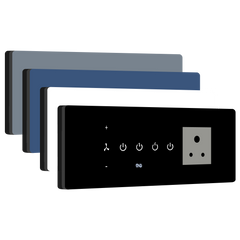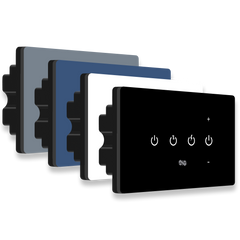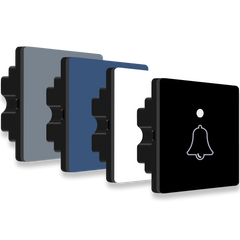How Much Electricity Do Smart Switches Really Use? A Detailed Guide

Smart home devices are no longer a luxury—they’re becoming the norm. Among them, smart WiFi switches are one of the most commonly adopted gadgets for their ability to make our homes more efficient, connected, and convenient. But with increasing concern around energy usage and utility bills, many homeowners ask: “How much electricity do smart switches really use?”
This in-depth guide will walk you through the energy consumption of smart switches, how they compare to traditional switches, what affects their usage, and if they’re actually worth having in your home. Whether you’re considering installing a WiFi switch for home use or already have some installed, this guide will answer your key questions.
What Are Smart Switches?
Before diving into energy usage, let’s first understand what smart switches are.
A smart switch is an internet-connected device that allows you to control your home’s lighting and other appliances remotely using a smartphone app or voice assistant like Alexa or Google Home. Unlike traditional switches that require manual operation, smart WiFi switches offer automation, scheduling, and remote access—all designed to improve convenience and energy efficiency.
How Do Smart Switches Work?
Smart switches work by connecting to your home’s WiFi network. Once installed in place of a traditional switch, they allow users to control them via a mobile app or smart assistant. These switches stay in standby mode, waiting for commands, which means they are always on in some capacity—this is where power consumption comes into play.
Do Smart Switches Use Electricity When Idle?
Yes, smart WiFi switches do consume a small amount of electricity even when not actively being used. This standby power, often referred to as phantom load or vampire power, is required to keep the switch connected to your home network and responsive to commands.
Most smart switches consume anywhere from 0.5 to 1.5 watts of electricity per hour in standby mode. While this might sound negligible, it can add up depending on how many smart switches you have installed.
How Much Electricity Do Smart Switches Use in a Month?
Let’s break it down with a simple calculation:
-
Average standby power usage: 1.6 watts
-
Time: 24 hours/day × 30 days = 720 hours/month
-
Energy consumption: 1.6 watt × 720 hours = 1152 watt-hours or 1.15 kWh/month
If your electricity rate is Rs. 4.8 per kWh, that means:
-
Monthly cost per smart switch = 1.152 kWh × ₹4.8 = ₹5.5
Even if you have 10 smart switches, your monthly cost would only be around ₹55. So, the electricity usage of smart WiFi switches is minimal.
What Affects the Electricity Usage of a Smart Switch?
Several factors can influence how much electricity your smart switch uses:
WiFi Connectivity Strength
Weak WiFi signals may cause the switch to work harder to maintain a connection, leading to slightly increased energy consumption.
Hardware Quality
High-quality smart switches often use more efficient components that draw less standby power.
Firmware Efficiency
Brands that update their firmware frequently tend to optimize background processes, reducing idle power use.
Added Features
Switches that include features like motion detection, light sensors, or touch panels may consume more electricity than basic models.
Smart Switch vs. Traditional Switch: Energy Consumption
Traditional switches do not consume power—they are purely mechanical. So at first glance, a smart WiFi switch does use more electricity.
However, smart switches allow better energy management by enabling:
-
Scheduling: Automatically turning lights off when not needed.
-
Remote control: Turning off lights from anywhere.
-
Voice automation: Hands-free convenience that promotes efficient usage.
Over time, these benefits can lead to net energy savings, especially if users take full advantage of their features.
Are Smart Switches Worth the Electricity They Use?
Absolutely. The minimal electricity consumption of a smart switch is greatly outweighed by the control and efficiency they offer. If used correctly, smart switches can help reduce your overall energy consumption by:
-
Preventing lights from being left on unnecessarily.
-
Automating outdoor lighting to work only when needed.
-
Making it easier to manage lighting across large properties.
How to Minimise Smart Switch Power Consumption
Even though their usage is low, here are some tips to make smart switches even more energy efficient:
-
Use High-Quality Products: Choose reputable brands with energy-efficient components.
-
Update Firmware: Keep your devices up to date to benefit from energy optimization.
-
Optimize WiFi Network: A strong, stable signal reduces energy strain on the switch.
-
Disable Unnecessary Features: Turn off motion detection or LED indicators if not needed.
Top Benefits of Using Smart WiFi Switches
Beyond just the energy factor, smart switches offer many home improvement benefits:
-
Convenience: Control lights from your phone or via voice.
-
Automation: Set schedules to match your lifestyle.
-
Security: Simulate occupancy when you’re away from home.
-
Integration: Pair with smart bulbs, thermostats, and sensors for full home automation.
Are There Any Downsides?
A few potential drawbacks include:
-
Installation Complexity: May require neutral wires or professional installation.
-
Initial Cost: Smart switches are more expensive than standard ones.
-
Dependence on WiFi: A weak or unreliable network can affect performance.
Despite these minor cons, the overall value smart switches provide outweighs the downsides—especially when used with intent.
Conclusion: Smart Switch Energy Use vs. Benefits
So, how much electricity do smart switches use? Not much. With average consumption under 1 kWh per month, the cost is negligible, less than a few pennies per week. For the added comfort, convenience, and long-term energy management they provide, smart WiFi switches are an excellent investment for any modern home.
If you're considering a reliable WiFi switch for home or looking to expand your smart home setup, choose wisely and go with trusted brands.
At iotics, we prioritize smart design, energy efficiency, and seamless integration. Our smart WiFi switches are engineered to deliver top performance without draining your power or wallet.


